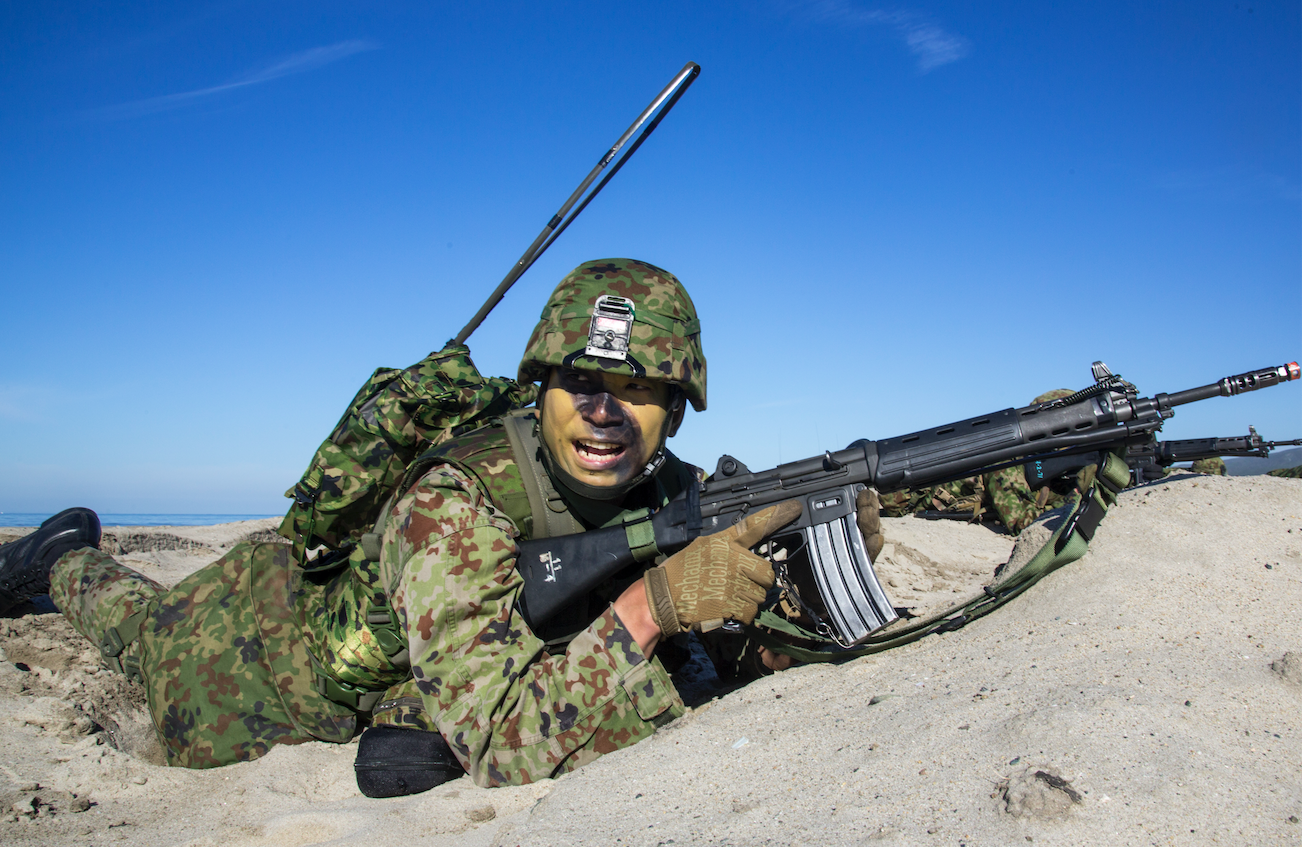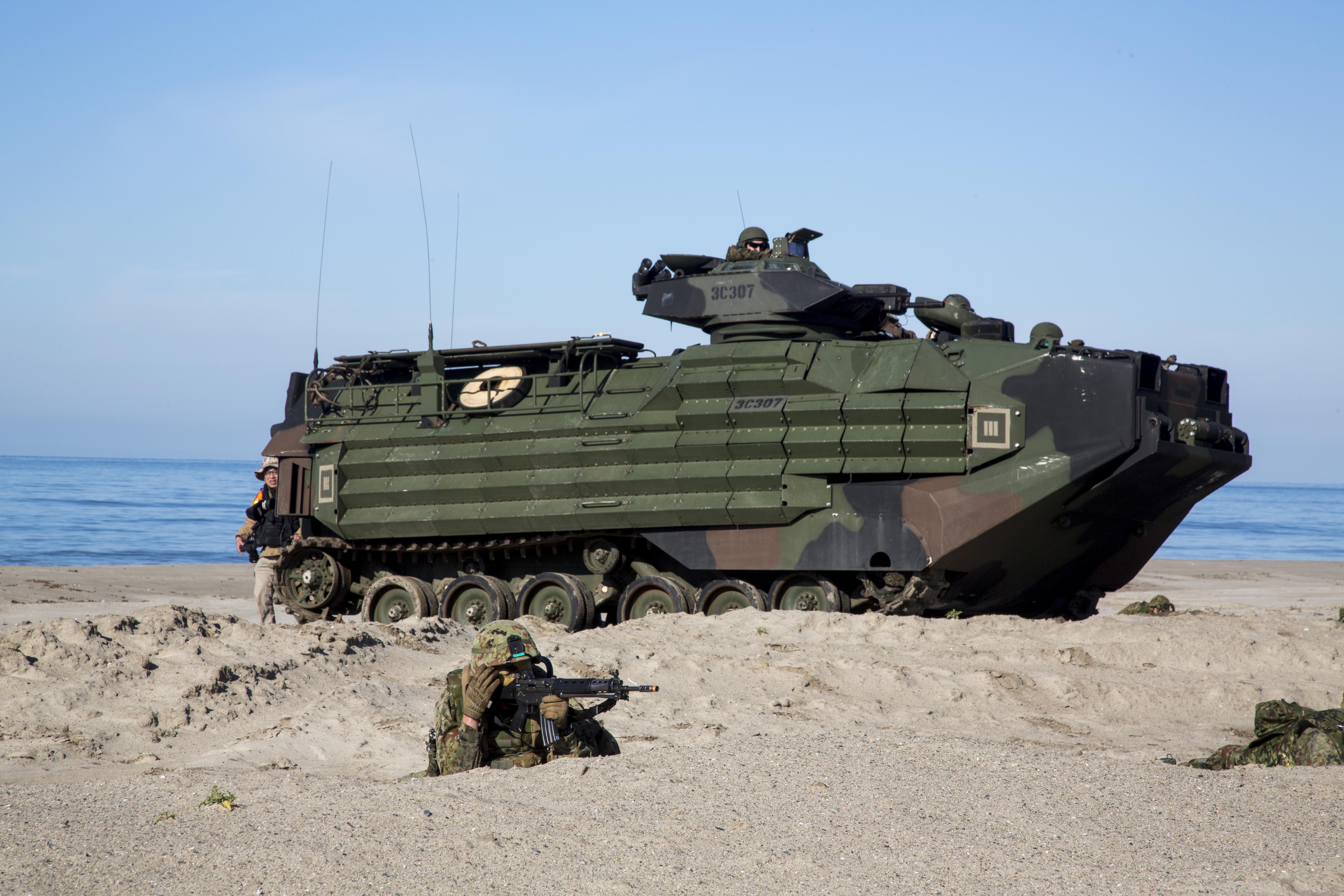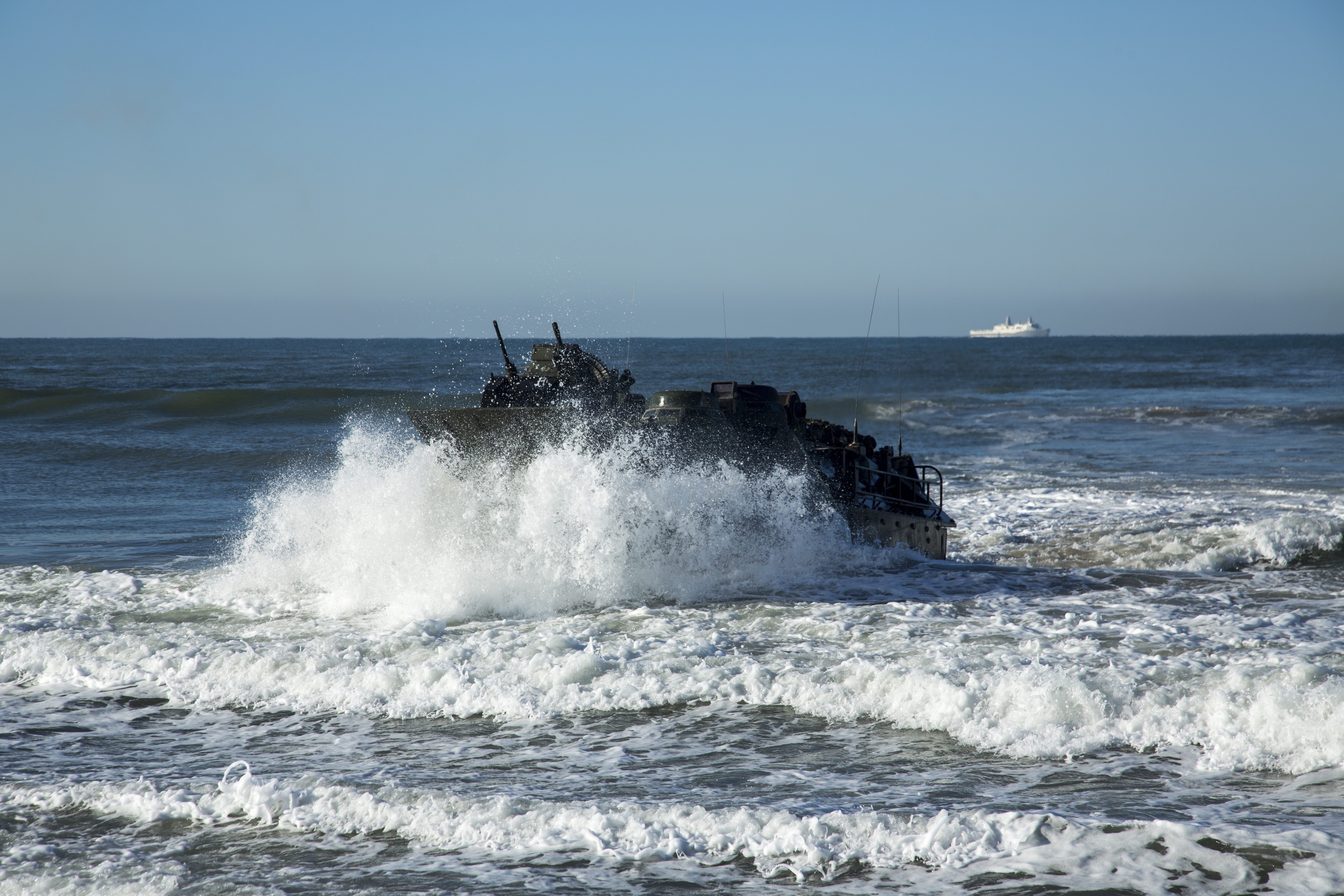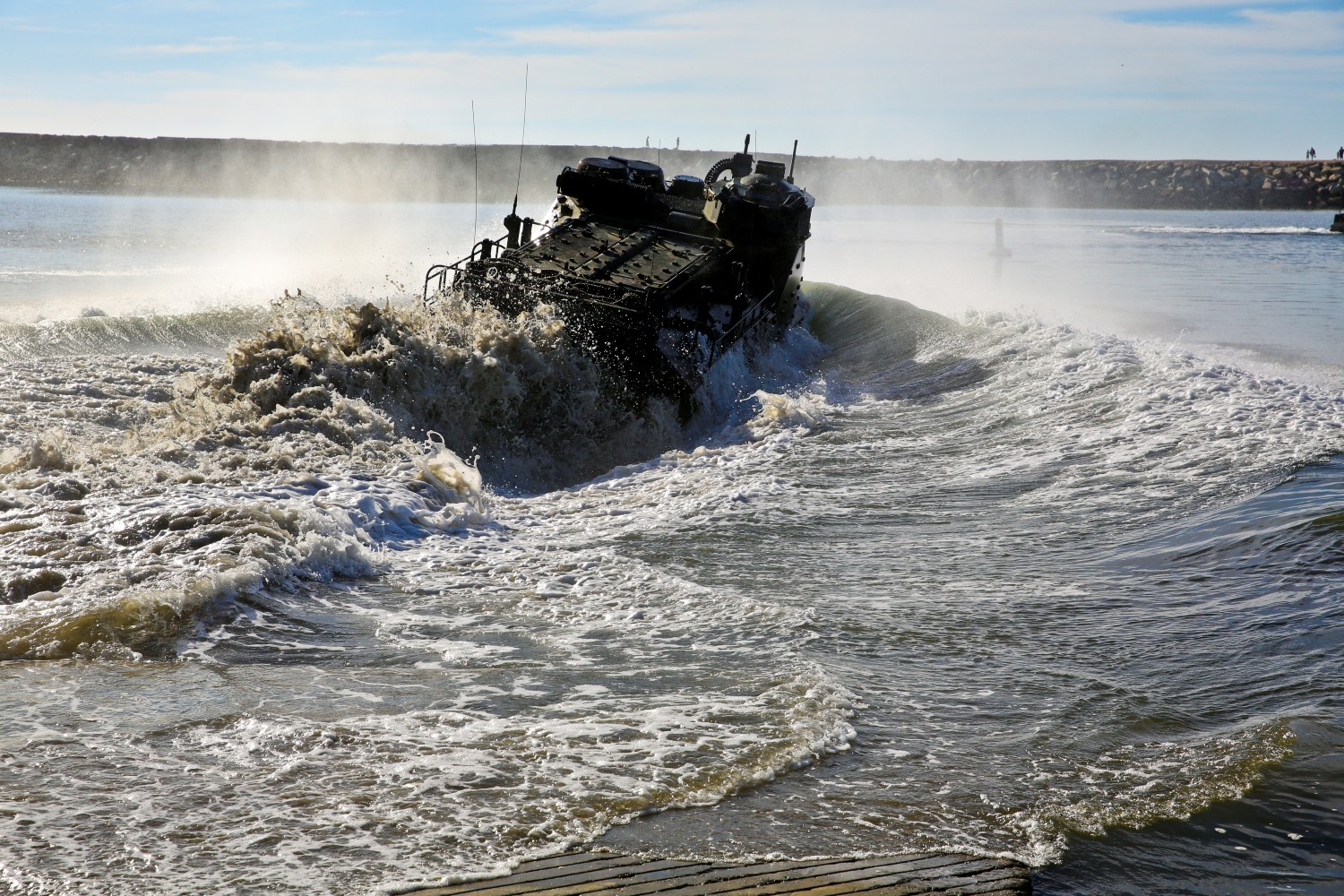
CAMP PENDLETON, Calif. – While rough seas and queasy stomachs tested some 350 Japanese soldiers and command staffs who took to sea aboard Navy ships for exercise Iron Fist, time might be their greatest obstacle.
The members of the Japanese Ground Self Defense Force’s Western Area Infantry Regiment training in California are part of a fledgling force that will become the JGSDF first Amphibious Ready Deployment Brigade. That unit is tasked with creating a credible, ready force to conduct amphibious operations and defend its islands by next year.
“My challenge, I think, we are facing is the newly establishment of Amphibious Rapid Deployment Brigade in March 2018, and we don’t have much time,” Maj. Gen. Shigeo Kaida, the Western Army’s deputy chief of staff for operations, said in response to a question during a press conference Saturday that kicked off a three-day Iron Fist amphibious exercise.
The Western Army is tasked with forming the Amphibious Rapid Deployment Brigade, or ARDB, and develop amphibious doctrine and the related tactics, training, planning and other requirements for the force. It’s been almost seven years in the making, but pressures are growing with the looming deadline for the first of what would be three deployable brigades.
“We are now receiving a lot of support from U.S. Marine Corps and Navy and Japanese Maritime Self Defense Force and Air Self Defense Force,” Kaida said. “We have to train ourselves utilizing the limited period of time…, thus living up to our expectations.”

Such pressures aren’t unique, added Maj. Gen. David Coffman, deputy commander of I Marine Expeditionary Force, noting U.S. military units face “similar challenges, time and resources.”
“Amphibious operations are very complex. It takes lots of practice and lots of time and lots of resources to put that together to get a quality training,” Coffman said at the press conference, attended by several Japanese media outlets.
The ARDB that will stand up next year would be just the first of three brigades planned for the Western Army. Its Western Army Infantry Regiment, a light-infantry force formed 15 years ago with a focus on soldiers conducting missions including rescue and amphibious operations, force of sea soldiers, is forming up the first ARDB and will equip them with AAVs and MV-22 Osprey tilt-rotor aircraft.
Japan’s amphibious capabilities have grown since 2006, when a contingent of 125 soldiers trained with combat rubber raiding craft off Coronado Naval Base, Calif., for the first Iron Fist. This year marked the 12th iteration that along with exercises including Keen Sword and Dawn Blitz have helped develop the ARDB, bolstered JGSDF’s interoperability with Marines and strengthened deterrence and response within the 56-year-old U.S.-Japan security alliance.
About 350 Japanese soldiers and more than 500 Marines with the 13th Marine Expeditionary Unit from Camp Pendleton took part in the amphibious landing exercise that wrapped up Monday. The PHIBLEX is one of ten Iron Fist training events that included recon, sniper, medical and logistics tactics and training. Iron Fist training ends Wednesday with a final, live-fire exercise. This year’s Iron Fist included a supporting arms exercise, or SACEX, where Marines and Japanese soldiers trained on San Clemente Island for live-fire training with their artillery and mortars along with close-air support with helicopters and the F-35 Lightning II fighter and naval gunfire support from the Arleigh Burke-class destroyer Howard (DDG-83) in the vicinity.
For the Saturday early-morning amphibious assault, Japanese soldiers and Marines, in separate waves. came ashore in Assault Amphibian Vehicles from amphibious transport dock USS Anchorage (LPD-23), operating west of Red Beach, as several dozen officials and dignitaries watched from a bluff. The landing force of soldiers and Marines moved inland toward separate, defined objectives as crafted in the exercise scenario, while the the Marine Corps and JGSDF’s commanders and staffs remained on ship but would bring their command elements ashore later in the day. “At the first Iron Fist, we couldn’t do that at all,” Kaida noted.

“What you saw today is one ship and one very small landing of a small force,” Coffman said. The colonels and command staffs working a real PHIBLEX event “would operate at a much larger scale with a number of ships (and) a number of maneuver elements.”
“What we try to impart to our soldiers and Marines is how precious the training time is, how precious it is to get what you can get in terms of objectives each time we get the chance to work together,” he said. “This training exercise also ensures the WAIR and I MEF can conduct bilateral operations and exercises, whether in providing relief in the event of a national disaster or defending sovereign territory,” he added.
The Iron Fist scenario centered on a mission to retake a fictitious island from an invader force. Kaida, in a question posed by a Japanese journalist, said the scenario was crafted with no particular island in mind. “We don’t assume a certain island in Japan, at all,” he replied.
Japan, an island-nation, has more than 6,800 islands, the general noted. These include the Senkaku islands near Taiwan in the East China Sea but which China and Taiwan have laid claim.
“Our mission is to protect our islands, our country, including those islands, no matter what happens.” Kaida said. “We are trying to refine our combat proficiencies, our capabilities through this exercise to achieve that mission objective.”
Coffman noted that the United States, “like Japan, is a maritime nation. Our capability to operate together across the Pacific, in accordance with our treaty, to defend our democracies is really what our work together is about.”
Japanese GSDF leaders have praised the partnership and the wide range of training facilities at Camp Pendleton, which includes several training areas along beaches and a boat basin to practice amphibious operations and landings. “It’s a very rare opportunity for us to execute a regimental level exercise, like Iron Fist with the U.S. Marine Corps,” Kaida said.

This year’s training included a contingent of seven or eight Japanese officers with the JSDF’s maritime and air components within the planning staff, not just as observers as from prior exercises. “It is not only the Army department but also our Navy, Japan’s Maritime Self Defense Force, included,” Kaida said. They “partner with each other and create a plan.”
“Launching AAVs and employing them needs the knowledge from the Maritime Self Defense Force,” Kaida said, adding the series of exercises help build bilateral and joint interoperability.
This year’s Iron Fist focused more on the planning and employment of the AAV with I MEF and San Diego-based Amphibious Squadron 1. Last year, Japan contracted with BAE Systems to purchase 30 new AAV7A1 vehicles, with delivery by the end of this year. It has four AAVs and leased another three for the exercise to help train and familiarize soldiers with operating and driving the vehicles, although for safety reasons Marines drove the amtracs from ship to shore, officials said.
Japanese forces will return to California for exercise Dawn Blitz 2017 in the fall. “We anticipate an even more advanced level of bilateral training,” Coffman said, “as our staffs continue to refine their command and control skills and our warfighters continue to develop their capabilities.”





